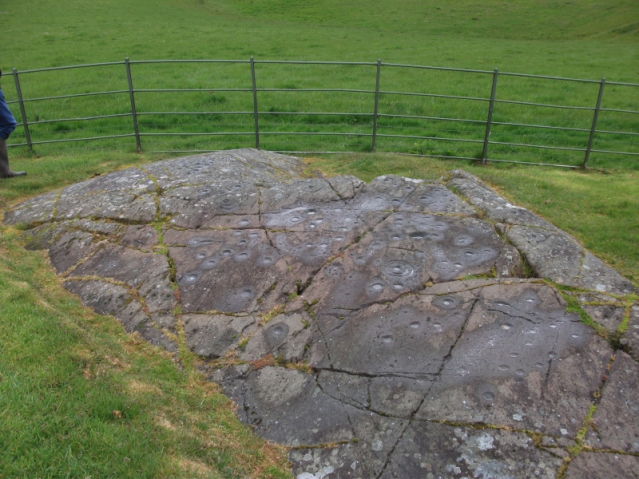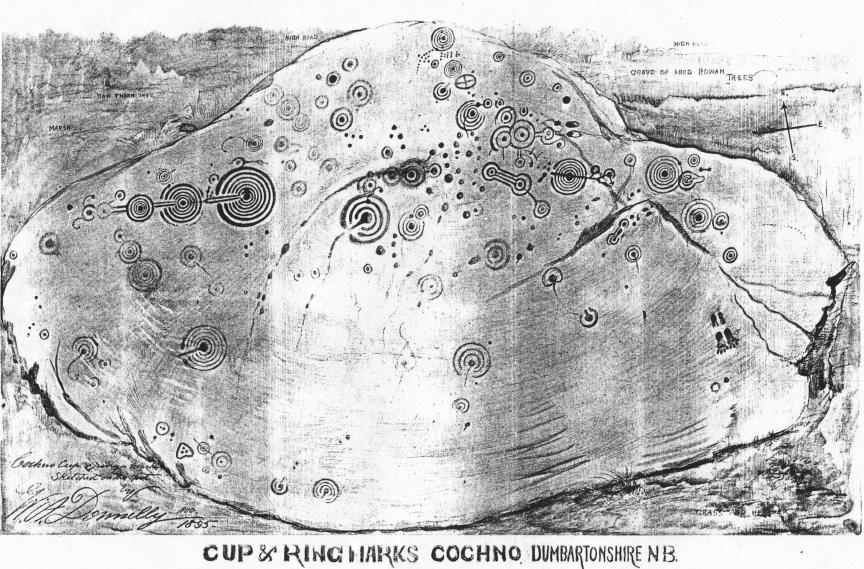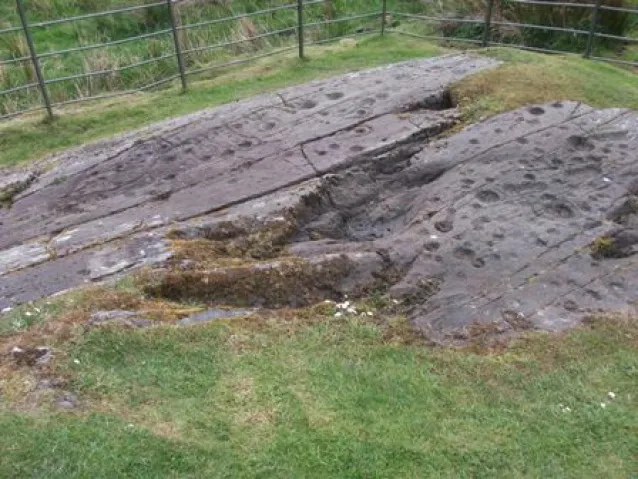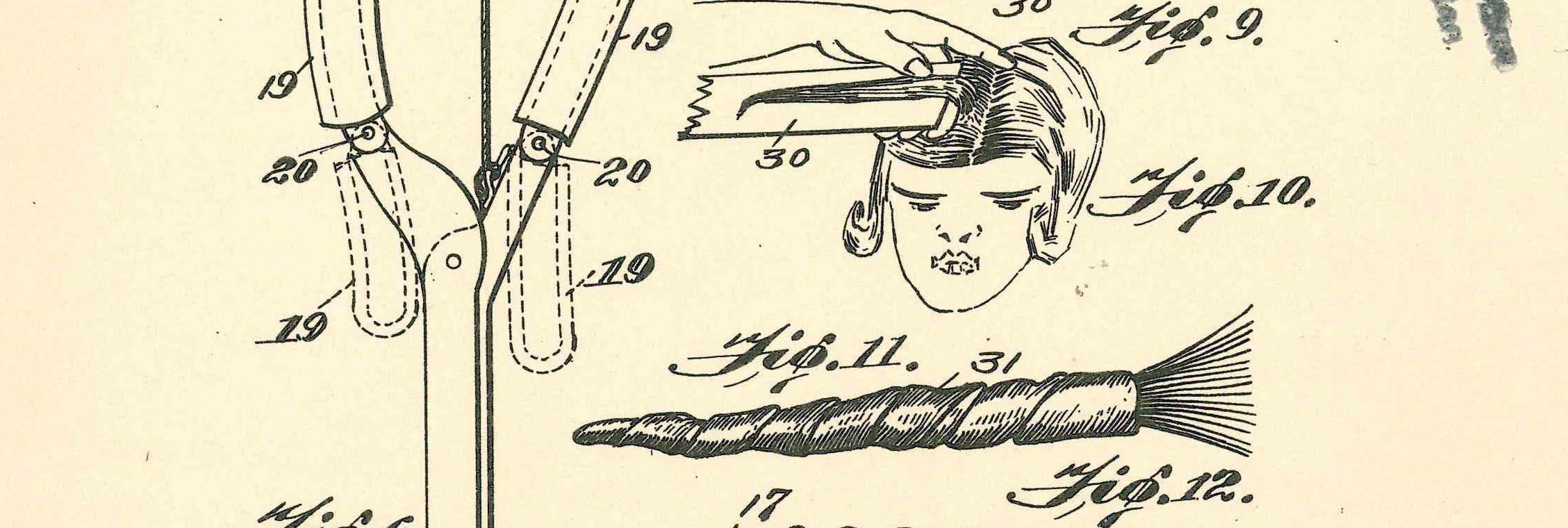The Cochno Stone, widely considered as one of the most mysterious and enigmatic artifacts found in modern history, has puzzled archaeologists, scientists, and enthusiasts for decades. The artifact, which features elaborate and intricate engravings, has been shrouded in mystery, with its origins and purpose still being debated by experts. Discovered in 1887, the Cochno Stone quickly captured the attention of the scientific community, thanks to its intriguing depictions of human figures, animals, patterns, and symbols. Despite its importance, the stone was eventually buried in the 1960s to protect it from vandalism and damage.
In recent years, the Cochno Stone has become a topic of renewed interest, as it was excavated in 2016, and archaeologists and researchers have been diligently working towards unraveling its secrets. Over the years, many theories have emerged to explain the purpose and meaning behind the engravings, ranging from astronomical maps to ancient scripts or even the origin of the piece. It is said that the markings of the stone are similar to those from the Neolithic era and are very mysterious. Since the stone is from a previous era, it is impossible to know the meaning of the symbols, as there is no known meaning for them. However, researchers believe that the symbols could represent an ancient language, and they could potentially provide some clues about the origins of the Cochno Stone and the ancient cultures that lived in the area. The Cochno Stone is an important reminder of the mysterious past of the area and the people who lived there. It is a powerful symbol of the ancient culture that once existed and is a reminder of how much knowledge has been lost through the ages.

1. Introduction to the Cochno Stone and its significance
The Cochno Stone is a highly significant ancient monument located in Scotland. This megalithic artifact is considered to be one of the finest examples of prehistoric rock art in the British Isles. The stone measures 13 meters by 7.9 meters and is covered with intricate designs and patterns. The Cochno Stone was first discovered in the 1880s and subsequently underwent extensive excavation and conservation efforts. Although the purpose of the patterns on the stone is not entirely understood, they are believed to have been created during the Neolithic period, making them at least 5,000 years old. It is a fascinating and mysterious artifact that continues to intrigue researchers and historians alike. In the following sections, we will explore the Cochno Stone in more detail, diving deeper into its history, significance, and ongoing research.
2. The Cochno Stone’s location in Scotland
The Cochno Stone, also known as the Cochno Hill Stone, is an important archaeological site located in West Dunbartonshire, Scotland. The stone features an intricate array of prehistoric carvings and is considered to be one of the finest examples of prehistoric rock art in Europe. The stone was originally discovered in 1887 by the Rev James Harvey, who found the carvings while exploring the Cochno Farm. The location of the Cochno Stone has been the subject of much debate in recent years, with many people calling for its return to its original location on Cochno Hill. However, due to concerns about the stone’s safety and preservation, it remains buried and inaccessible to the public. Despite this, the Cochno Stone remains a significant piece of Scotland’s prehistoric heritage and continues to fascinate archaeologists and researchers around the world.
3. The archaeological importance of the Cochno Stone
The Cochno Stone is a significant artifact located in West Dunbartonshire, Scotland, which bears over 90 carved marks distributed across its surface. The stone was first discovered in 1887 and subsequently covered with soil to preserve it, making it inaccessible for scientific study for decades. Its importance as an archaeological object is highlighted by the evidence it provides of prehistoric rock art, which is rare in the British Isles. The Cochno Stone is unique for its size, quality, and variety of motifs, making it a valuable resource for understanding the cultural and artistic practices of the Bronze Age. As such, it is essential that the stone be carefully and expertly studied to unlock its full archaeological significance. The Cochno Stone presents a crucial opportunity to gain insights into the practices and beliefs of prehistoric communities, and its preservation and protection must be a high priority for researchers and cultural heritage organizations alike.
4. Analysis of the Cochno Stone’s rock carvings
The Cochno Stone, located in West Dunbartonshire, Scotland, has captivated academics and enthusiasts for years with its intricate patterns of rock carvings. Archaeological excavations and analysis have revealed that the rock was likely carved over several phases, dating back to at least 5000 B.C. The carvings on the Cochno Stone are composed of grooves and cup marks, with some scholars speculating that they may have been used for astronomical purposes. The rock carvings are widely considered to be one of the most important examples of prehistoric rock art in the region. A thorough analysis of the carvings could shed light on the culture and practices of the prehistoric people who created them, providing a deeper understanding of Scotland’s early history.

5. Speculation on the purpose of the Cochno Stone’s carvings
The Cochno Stone is a large flat slab of rock located near Clydebank, Scotland, that is covered in intricate carvings believed to have been made by Neolithic people over 5,000 years ago. Despite extensive study and research, the purpose of these carvings remains a mystery. Speculation on the purpose of these carvings has led to a wide range of theories. Some researchers believe that the carvings could have been used for astronomical or astrological purposes, while others suggest that they may have had ritualistic or religious significance. Additionally, some researchers have suggested that the stone could have been used as a map or as a way to record important historical events. Despite the many theories put forward to explain the Cochno Stone’s carvings, we still lack a definitive answer to the question of why they were made and what they meant to the people who created them.
6. Discussion of the Stone’s potential age
The Cochno Stone is an important piece of Bronze Age rock art located in West Dunbartonshire, Scotland. One of the most intriguing aspects of this site is the potential age of the stone, which has been a subject of much discussion and debate among scholars. Initial assessments suggested that the carvings on the stone dated back to the Neolithic period, around 3000 BC. However, more recent studies using radiocarbon dating techniques have placed the stone in the Bronze Age, around 2000-1500 BC. Despite this, some experts still believe that the Cochno Stone could be even older than previously thought, with suggestions that it may have been reused and recarved over a longer period of time. Therefore, further research and examination of the site is necessary to fully understand the age and significance of the Cochno Stone in relation to the history and culture of the region.
7. The current state of the Cochno Stone
The Cochno Stone, situated in West Dunbartonshire, Scotland, is a prehistoric rock art panel that was once considered to be one of the finest in Western Europe due to its intricacy and size. The location of the Cochno Stone has been known since the 19th century, and it was finally excavated in 2015 for the first time in over 50 years. Since then, the current state of the Cochno Stone has been of great interest to scholars and the public alike. Today, the stone remains buried to protect it from vandalism and damage, with the possibility of reburial after future research. A replica has been created, though it remains a topic of debate whether the replica effectively captures the intricate and unique nature of the original. The Cochno Stone continues to be an important archaeological site, sparking interest and investigation into the Neolithic era and the people who created this remarkable rock art.
8. Preservation efforts for the Cochno Stone
The Cochno Stone, a celebrated example of prehistoric rock art, has been a subject of intense interest and scrutiny in recent years, attracting both enthusiasts and academics alike. Its unique cultural and historical value has led to the initiation of preservation efforts to protect it from natural and human-induced wear and tear. These efforts have included the taking of detailed measurements using cutting-edge imaging technology, and the implementation of specialized protective coatings to shield it against the elements. The stone has also been reburied to prevent its exposure to the elements, whilst maintaining accessibility to interested parties. The preservation of the Cochno Stone has involved a multidisciplinary approach, requiring cooperation between heritage organizations, conservationists, and archaeologists, all dedicated to ensuring that this invaluable cultural artifact remains intact for generations to come.
9. Plans for further research
The Cochno Stone has been the subject of extensive research, yet many mysteries remain. In light of this, plans for further research have been developed to shed more light on the origins, purpose, and significance of this enigmatic stone. Firstly, more excavations will be carried out in the surrounding area to gather more contextual data on the Cochno Stone and understand its placement better. Secondly, advanced imaging technologies, such as photogrammetry and 3D laser scanning, will be employed to produce high-resolution digital models of the stone, which can be used for further analysis and interpretation. Thirdly, more interdisciplinary studies will be conducted to explore the possible astronomical, cultural, or spiritual connections that may have existed between the stone and its environment. These multifaceted plans promise to generate new insights into the Cochno Stone’s baffling symbolism and historical context, further enriching our understanding of this unique artifact.

10. Secrets of the Cochno Stone
The Cochno Stone is a large flat slab of rock, measuring approximately 42 feet by 26 feet, and is etched with dozens of carved and pressed markings. The rock, located near Clydebank, Scotland, was discovered in 1887 and is believed to be around 5,000 years old. Known as one of Scotland’s most famous rock artworks, the Cochno Stone has been the subject of many studies and interpretations over the years. However, it is the Secrets of the Cochno Stone that have intrigued researchers, archaeologists, and historians for decades, leading many to believe that its significance goes beyond what is currently understood. This document will explore the Cochno Stone’s history, its markings of probable significance, and the enduring mysteries and theories surrounding its creation and meaning.
In conclusion, the Cochno Stone remains a remarkable and intriguing artifact that has piqued the interest of archaeologists, historians, and enthusiasts for decades. While its purpose and origins have yet to be fully understood, it stands as a symbol of ancient human creativity and ingenuity. The recent unearthing of the stone allows us to further analyze and interpret its many symbols, shapes and lines, providing us with a glimpse into the mysteries of the past. The controversy surrounding the stone has only added to its allure, sparking debate and conjecture as to its possible use and significance. Regardless of its true meaning, the Cochno Stone will continue to fascinate and intrigue people for generations to come.


